Josiah Wedgwood
Josiah Wedgwood, the thirteenth and youngest son of the potter, Thomas Wedgwood, was born in Burslem, Stoke, on 12th July 1730. His mother, Mary Stringer Wedgwood, was the daughter of the Unitarian minister at Newcastle under Lyme, and taught all her sons and daughters to read and write. At the age of seven he walked three-and-a-half-miles to attend the local school. (1)
At the age of nine Josiah left school and joined the family business at Churchyard Works. His father had died so Josiah was apprenticed to his elder brother. (2) After an attack of smallpox at the age of eleven, his health deteriorated and the disease which left his right knee permanently weakened and work as a potter became difficult. Josiah spent his time reading and researching about the craft of pottery. (3)
In 1742 Josiah left the family business and joined Harrison & Alders, a minor pottery in Stoke. In 1754, aged only twenty-four, he obtained a partnership with Thomas Whieldon, eleven years his senior. Wedgwood and Whieldon are credited with several innovations, including "the division of labour, with men employed on different tasks - throwing, turning, handling, decorating, mixing slip." They paid their workers well and gave them regular presents of a shirt or a pair of shoes. (4) As a result of this treatment they "exacted scrupulous obedience, respectful behaviour, and strict punctuality". (5)
According to Robin Reilly, "Wedgwood's work with Whieldon was largely concerned with the improvement of ceramic bodies, glazes, colours, and shapes, and it is clear that his efforts were directed principally towards the development of lead-glazed, cream-coloured earthenware (creamware) and the creation and improvement of coloured glazes." (6) Wedgwood later explained that there were good economic reasons for these experiments, "the improvement of our manufacture of earthenware, which at that time stood in great need of it, the demand for our good decreasing daily, and the trade universally complained of as being bad and in a declining condition." (7)
Josiah Wedgwood at Burslem
In 1759 Wedgwood left Whieldon to become an independent potter, renting the Ivy House Works at Burslem for £15 a year and hiring his cousin, Thomas Wedgwood, as journeyman. Thomas, who was four years younger than Josiah, had served his apprenticeship at a manufacturer's in Worcester where he learnt how to make a new form of porcelain. His skills were so valuable that he was willing to pay him £22 a year, well above the average for a skilled artisan. (8)
Ivy House was the first pottery factory in England. (9) Wedgwood employed fifteen men and boys. He taught his men the techniques developed while he worked with Whieldon. The rich green and yellow glazes were applied in the shape of cauliflowers, pineapples, artichokes and melons. He also arranged for his pots to be decorated by the new transfer printing. The men took prints from engraved copper plates, made on paper or on sheets of glue using ceramic colour, and pressed them on to the glaze. This trade grew rapidly in worth from £30 a month in 1763 to £650 a month eight years later. (10)
On one of his trips to Liverpool in 1762 Wedgwood met Thomas Bentley, a general merchant in the town. Bentley was the same age as Wedgwood and held similar Nonconformist religious views. They were both sympathetic to the Unitarian movement. There is no set doctrinal beliefs that all Unitarians agree on. In fact, the most important aspect of Unitarianism is the right of individuals to develop their own religious opinions. Unitarians tend to believe that Jesus Christ was a human religious leader to be followed but not worshipped. Unitarians argued that Jesus is the "great exemplar which we ought to copy in order to perfect our union with God". Wedgwood's mother had taught him that "knowledge based upon reason, experience, and experiment was preferable to dogma." (11)
Bentley had received a better education and spoke French and Italian and knew a great deal about art. He also had radical political views and was a strong opponent of the slave-trade and a great supporter of female education. The two men became close friends and Bentley became Wedgwood's agent in Liverpool. Bentley had a tremendous impact on Wedgwood's political views.
They soon developed a very close relationship. In a letter he wrote to Bentley soon afterwards he described him as "my much esteemed friend... I shall not care how Quakerish or otherwise antique it may sound, as it perfectly corresponds with the sentiments I wish to continue towards you." (11a) Wedgwood told Bentley he loved receiving his letters: "The very feel of them, even before the seal is broke, cheers my heart and does me good. They inspire me with taste, emulation and everything that is necessary for the production of fine things." (12)
Wedgwood and Bentley were both strong supporters of the radical reformer, John Wilkes. In June 1762 Wilkes established The North Briton, a newspaper that severely attacked the George III and his prime minister, Earl of Bute. In March 1763, Wedgwood wrote to Bentley about Wilkes being forced into exile. "It gives universal disgust here and is the general topic of every political club in town". (13)
Josiah Wedgwood married his third cousin, Sarah Wedgwood, on 25th January 1764. He wrote that "for a handful of the first months after matrimony" he wished "to hear, see, feel or understand nothing" but his wife. He told Thomas Bentley that as a result of the damage caused by his early smallpox, his physiology was so adapted to feeling pain that sensual pleasures was more "than I shall ever be able to express." (14)
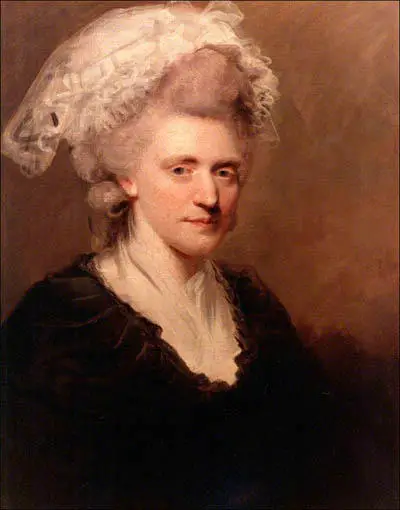
Sarah was a substantial heiress and brought with her a considerable dowry, said to have been £4,000, which came under Wedgwood's control. "Sarah was intelligent, shrewd, and well educated - better, in fact, than her husband - and they shared a broad sense of humour and a strong sense of family duty. In the first years of their marriage, she helped Josiah with his work, learning the codes and formulae in which he recorded his experiments, keeping accounts, and giving practical advice on shapes and decoration." Over the next few years Sarah had seven children: Susannah (1765), John (1766), Josiah (1769), Thomas (1771), Catherine (1774), Sarah (1776) and Mary (1778). (15)
Queen's Ware
In 1765, Charlotte of Mecklenburg-Strelitz, the wife of George III, ordered a tea-set from Wedgwood, complete with candlesticks and fruit baskets, "with a gold ground, and raised flowers upon it in green". He followed it up by sending a box of patterns and vases to the Queen and soon won permission to style himself "Potter to Her Majesty" while his creamware was granted the name of "Queen's Ware". A second tea-set was ordered by the King, to a simpler design which became known as "the Royal Pattern". (16)
The royal commissions sealed his reputation. Wedgwood wrote two years later: "The demand for Queen's Ware... still increases. It is really amazing how rapidly the use of it has spread almost all over the whole globe, and how universally it is liked. How much of this general use and estimation is owing to the mode of its introduction - and how much to its real utility and beauty are questions in which we may be a good deal interested for the government of our future conduct." (17)
It has been claimed that Josiah Wedgwood had the "supreme gift of being able to persuade the governing classes that that they had a community of tastes and interests". (18) Joel Mokyr, the author of The Enlightened Economy: Britain and the Industrial Revolution (2009) has pointed out: "The notion of marketing was pushed furthest by the famed potter Josiah Wedgwood, whose appeals to snobbery and to the nobility-envy of the merchant and middle classes were an early example of what some might think of as consumer manipulation. Wedgwood's marketing strategies included a brazen display of goods targeted at the high and the mighty, to be imitated by the would-have-beens and even by the never-were." (19)
During this period Josiah Wedgwood became friends with the industrialist, Matthew Boulton. Wedgwood visited his factory in Birmingham in May 1767. At the time Boulton was employing over 500 people and had a turnover of £30,000. Wedgwood was impressed as he only had a turnover of around £5,000. Wedgwood wrote to his friend, Thomas Bentley: "He is I believe the most complete manufacturer in England in England, in metal. He is very ingenious." (20)
The following year Boulton formed a partnership with Wedgwood. It was agreed that Wedgwood would supply plain ornamental vases which Boulton would finish by applying colourful gold and purple metal works (ormolu) to vases. Boulton told Wedgwood that he was convinced that they were going to "supplant the French in the gilt business" and would extend "the sale of it to every corner of Europe." (21)
Unfortunately, Wedgwood had to cancel the arrangement because of ill-health. For the past 25 years he had been troubled by numbness in the knee and fatigue in the muscles he used to compensate when walking. A fall from a horse made his leg even worse. He examined by his doctor, Matthew Turner, who told him that he had broken his shinbone. However, he was also concerned about the tumour in his leg that was the result of having smallpox he had as a child. He feared it was spreading and he advised him to have his leg amputated. This was carried out without anesthetic in April, 1767. (22)
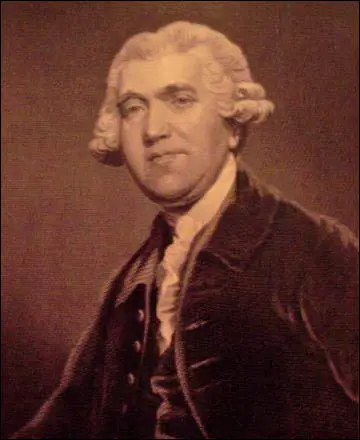
Matthew Boulton and his friend Erasmus Darwin formed what became known as the Lunar Society of Birmingham. The group took this name because they used to meet to dine and converse on the night of the full moon. Wedgwood also attended these meetings. Other members included James Watt, Joseph Priestley, Thomas Day, William Small, John Whitehurst, John Robison, Joseph Black, William Withering, John Wilkinson, Richard Lovell Edgeworth and Joseph Wright. This group of scientists, writers and industrialists discussed philosophy, engineering and chemistry. (23)
As Maureen McNeil has pointed out: "These innovating men of science and industry were drawn together by their interest in natural philosophy, technological and industrial development, and social change appropriate to these concerns. The society acquired its name because of the practice of meeting once a month on the afternoon of the Monday nearest the time of the full moon, but informal contacts among members were also important." (24)
Trent & Mersey Canal
At one of these meetings Wedgwood met the engineer James Brindley. He had great success from building the Bridgewater Canal for Francis Egerton, the Duke of Bridgewater. This provided Manchester manufacturers with an alternative way of transporting their goods to the port of Liverpool. As this reduced the costs of transporting goods between these two cities from 12s to 6s a ton (20 cwt), Bridgewater had little difficulty in persuading people to use his canal. It was a "powerful signal regarding the profitability and feasibility of canals". (25)
The financial success of the Bridgewater Canal encouraged other business people to join together to build canals. Josiah Wedgwood had been transporting his pottery by pack-horses. The poor state of the roads meant a great number of breakages. In 1766 Wedgwood and some of his business friends decided to recruit James Brindley to build the Trent & Mersey Canal. (26)
Wedgwood had already bought for £3,000 the Ridgehouse estate of some 350 acres, situated between Burslem, Hanley and Newcastle under Lyme, and built there a factory which he named Etruria. A crucial advantage of the location of the factory was its position next to the proposed Trent and Mersey Canal. (27)
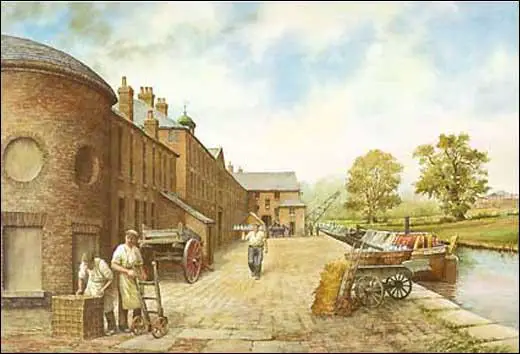
The canal began within a few miles of the River Mersey, near Runcorn and finished in a junction with the River Trent in Derbyshire. It was just over ninety miles long with more than 70 locks and five tunnels. At the time it was described as the "greatest civil engineering work built in Britain." Although the canal cost £130,000 to build, it reduced the price of transporting Wedgwood's goods from £210s to 13s 4d a ton. (28)
John Wilkes
John Wilkes returned to England in 1768 and in March stood as Radical candidate for Middlesex. The vote was held in public and of the 15 electors, 13 voted for "Wilkes and Liberty". After being elected Wilkes was arrested and taken to King's Bench Prison. For the next fortnight a large crowd assembled at St. George's Field, a large open space by the prison. (29)
On 10th May, 1768 a crowd of around 15,000 arrived outside the prison. The crowd chanted 'Wilkes and Liberty', 'No Liberty, No King', and 'Damn the King! Damn the Government! Damn the Justices!'. Fearing that the crowd would attempt to rescue Wilkes, the troops opened fire killing seven people. Anger at the Massacre of St. George's Fields led to disturbances all over London. (30)
Wedgwood was an active member of the Unitarian Church. Like most Unitarians, Wedgwood was a political reformer. He supported universal male suffrage and annual parliaments. Wedgwood made it clear that he supported Wilkes and in defiance of the king he produced pottery that contained portraits of John Wilkes and other campaigners for universal suffrage. (31)
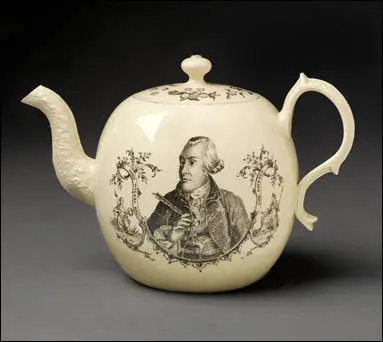
On 8th June Wilkes was found guilty of libel and sentenced to 22 months imprisonment and fined £1,000. Wilkes was also expelled from the House of Commons but in February, March and April, 1769, he was three times re-elected for Middlesex, but on all three occasions the decision was overturned by Parliament. In May the House of Commons voted that Colonel Henry Luttrell, the defeated candidate at Middlesex, should be accepted as the MP. John Horne Tooke and other supporters of Wilkes formed the Bill of Rights Society. At first the society concentrated on forcing Parliament to accept the will of the Middlesex electorate, however, the organisation eventually adopted a radical programme of parliamentary reform. (32)
Thomas Bentley
In November, 1768, Wedgwood and Thomas Bentley of Liverpool became partners in Etruria. Arthur Young visited the company and later wrote: "In general we owe the possession of this most flourishing manufacture to the inventive genius of Mr. Wedgwood, who not only originally introduced the present cream coloured ware, but has since been the inventor of every improvement, the other manufactures being little better than mere imitators... Wedgwood has lately entered into a partnership with a man of sense and spirit, who will have taste enough to continue in the inventive plan." (33)
In 1769 Bentley moved to Great Newport Street in London to undertake the management of the Wedgwood showrooms and to establish a ceramic enamelling studio at Little Cheyne Row in Chelsea. In 1770 Empress Catherine the Great of Russia commissioned a huge dinner service of 952 pieces, each depicting a different British scene. "Nothing of the kind had previously been attempted in England, and Bentley's support in supervising and training as many as thirty-three previously semi-skilled painters, and finding illustrations for them to copy, must have been invaluable to Wedgwood". The service was successfully completed in 1774, and cost the Empress £2,700. (34)
Wedgwood continued to experiment and in 1775 he developed what became known as "jasper". This was a hard ceramic body that could be coloured and polished on a lapidary's wheel. Two years later he wrote that it was only after carrying out 5,000 experiments, that he could genuinely say, "I am now absolute in this precious article." (35) Jasper enabled him to produce white figures in relief against a coloured background. (36)
Wedgwood now employed artists such as John Flaxman to design his vases. Wedgwood said that he "lamented that Flaxman's Anthony and Cleopatras were so fine that he could hardly bear to part with them. Flaxman and his wife became good friends of the family and often stayed at Etruria. He sculpted at least twenty-two portraits of "illustrious moderns" for Wedgwood. In 1781 he designed lavish mouldings and allegorical friezes for the drawing-room ceiling at Etruria Hall. (37)
Wedgwood had a bell rigged to a turret across the yard from his house and every morning at quarter to six he rang it to tell his employees it was time to start work. Wedgwood believed it important to regulate working hours and to stop his workers from spending too much time in the alehouse. Although he insisted on strict factory discipline he also "subsidized an early form of sick-benefit scheme, and conditions for work at Etruria compared favourably with those to be found anywhere in Europe". (38)
Brian Dolan, the author of Josiah Wedgwood: Entrepreneur to the Enlightenment (2004) claims that Wedgwood and Bentley believed very strongly that they needed to improve the quality of life of their workforce: "Their accomplishments in designing new materials and products, and the money they made for their products, amounted to nothing if it did not generate broader social change; the principles of mercantile freedoms should extend to social freedoms, to create, in essence, a more egalitarian society." (39)
In December 1778, Thomas Bentley wrote to Wedgwood: "I have not any friend by whose side I have been accustomed to engage and conquer; and who had the same energy that you constantly possess, when there is occasion for it, either to promote the public good, assist your friends, or support your own rights. I fancy I can do anything with your help, and I have been so much used to it, that when you are not with me upon these occasions I seem to have lost my right arm". (39a)
Wedgwood was devastated by Bentley's death on 26th November 1780. The St James's Chronicle commented: "For his (Thomas Bentley) uncommon ingenuity, for his fine taste in the arts, his amiable character in private life, and his ardent zeal for the prosperity of his country, he was justly admired, and will long be most seriously regretted by all who had the pleasure of knowing so excellent a character". (39b) Bentley's letters were carefully bound in a great thick book and was described by Wedgwood as "Josiah's Bible". (39c)
In 1780 he joined the Society for Constitutional Information and became friendly with other reformers such as Joseph Priestley, John Cartwright, John Horne Tooke, John Thelwall, Granville Sharp, Thomas Walker, Joseph Gales and William Smith and the Duke of Richmond. It was an organisation of social reformers, many of whom were drawn from the rational dissenting community, dedicated to publishing political tracts aimed at educating fellow citizens on their lost ancient liberties. It promoted the work of Tom Paine and other campaigners for parliamentary reform. (40)
Wedgwood told his friend and partner, Thomas Bentley, who was also a member: "I wish every success to the Society for Constitutional Information and if I was upon the spot should gladly not confine myself to wishes only. If at this distance I can in any way promote their truly patriotic designs, either by my money or my services, they are both open to you to command as you please. I rejoice to hear that the Duke of Richmond and Lord Selbourne are friends of annual parliaments." He ended the letter with a quotation from fellow member, Major John Cartwight, "that every member of the state must either have a vote or be a slave". (41)
The following year his close friend, Joseph Priestley, had his house burnt down in Birmingham. He wrote to Priestley on 2nd September: "I persuade myself that you will rise still more splendid and more respected from what was intended to sink you. Your calmness and magnanimity on this trying occasion have put your enemies to shame. We esteem you in every point of view; and we are employed at this moment in drawing up a letter which is to be addressed to you by all the savants of the capital." (42)
The Slave-Trade
In 1787 Granville Sharp, Thomas Clarkson and William Dillwyn established the Society for the Abolition of the Slave Trade. Other supporters were William Allen, John Wesley, Samuel Romilly, Thomas Walker, John Cartwright, James Ramsay, Charles Middleton, Henry Thornton and William Smith. Sharp was appointed as chairman. He accepted the title but never took the chair. Clarkson commented that Sharp "always seated himself at the lowest end of the room, choosing rather to serve the glorious cause in humility... than in the character of a distinguished individual." Clarkson was appointed secretary and Hoare as treasurer. At their second meeting Samuel Hoare reported subscriptions of £136. (43)
Josiah Wedgwood joined the organising committee. He urged his friends to join the organisation. Wedgwood wrote to James Watt asking for his support: "I take it for granted that you and I are on the same side of the question respecting the slave trade. I have joined my brethren here in a petition from the pottery for abolition of it, as I do not like a half-measure in this black business." (44)
As Adam Hochschild, the author of Bury the Chains: The British Struggle to Abolish Slavery (2005) has pointed out: "Wedgwood asked one of his craftsmen to design a seal for stamping the wax used to close envelopes. It showed a kneeling African in chains, lifting his hands beseechingly." It included the words: "Am I Not a Man and a Brother?" Hochschild goes onto argue that "reproduced everywhere from books and leaflets to snuffboxes and cufflinks, the image was an instant hit... Wedgwood's kneeling African, the equivalent of the label buttons we wear for electoral campaigns, was probably the first widespread use of a logo designed for a political cause." (45)
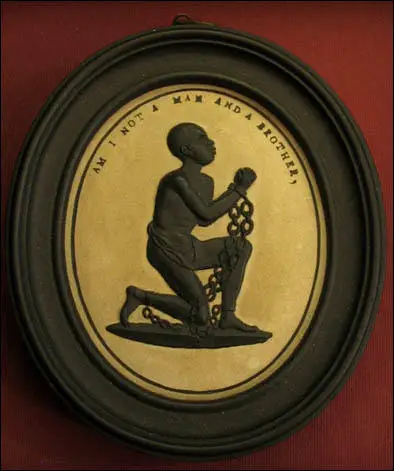
Thomas Clarkson explained: "Some had them inlaid in gold on the lid of their snuff boxes. Of the ladies, several wore them in bracelets, and others had them fitted up in an ornamental manner as pins for their hair. At length the taste for wearing them became general, and this fashion, which usually confines itself to worthless things, was seen for once in the honourable office of promoting the cause of justice, humanity and freedom." (46)
Hundreds of these images were produced. Benjamin Franklin suggested that the image was "equal to that of the best written pamphlet".Men displayed them as shirt pins and coat buttons. Whereas women used the image in bracelets, brooches and ornamental hairpins. In this way, women could show their anti-slavery opinions at a time when they were denied the vote. Later, a group of women designed their own medal, "Am I Not a Slave And A Sister?" (47)
Wedgwood, Joseph Priestley, Thomas Day and Erasmus Darwin helped form the Birmingham Anti-Slavery Committee. They were attacked by several leading merchants in the city and some of them even petitioned Parliament against abolition. Priestley declared that although they supported the commercial interests, they would oppose "any commerce which always originates in violence and often terminates in cruelty". (48)
In November 1794 Wedgwood's health began to fail. His face swelled and he suffered acute pain in the jaw, attributed to a decayed tooth. His condition deteriorated rapidly and he became unconscious. Josiah Wedgwood died, probably from cancer of the jaw, on 3rd January 1795, at Etruria Hall. He had made substantial gifts to his children during his lifetime but the total value of his estate nevertheless approached £500,000 (over £200 million in today's money). (49)
Primary Sources
(1) Josiah Wedgwood, letter to Thomas Bentley (25th May, 1780)
I wish every success to the Society for Constitutional Information and if I was upon the spot should gladly not confine myself to wishes only. If at this distance I can in any way promote their truly patriotic designs, either by my money or my services, they are both open to you to command as you please. I rejoice to hear that the Duke of Richmond and Lord Selbourne are friends of annual parliaments. I agree with Major Cartwight "that every member of the state must either have a vote or be a slave".
(2) Joel Mokyr, The Enlightened Economy: Britain and the Industrial Revolution (2009)
The notion of marketing was pushed furthest by the famed potter Josiah Wedgwood, whose appeals to snobbery and to the nobility-envy of the merchant and middle classes were an early example of what some might think of as consumer manipulation. Wedgwood's marketing strategies included a brazen display of goods targeted at the high and the mighty, to be imitated by the would-have-beens and even by the never-were. It is easy to exaggerate the representativeness of Wedgwood: he was in many ways a highly unusual individual, an entrepreneur of rare imagination and audacity, and few could measure up to him.
(3) Robin Reilly, Josiah Wedgwood : Oxford Dictionary of National Biography (2004-2014)
It was not only the products of the Etruria factory that were innovative: the layout of the factory and the management techniques employed there were exceptionally advanced, and the finished estate included an elegant house, Etruria Hall, for the Wedgwood family, and housing for many of the workers. Wedgwood insisted on strict factory discipline but he subsidized an early form of sick-benefit scheme, and conditions for work at Etruria compared favourably with those to be found anywhere in Europe....From 1772 it was Wedgwood's policy to mark everything made at Etruria. He was the first earthenware potter consistently to mark his goods and the first ever to use his own name, which was impressed in the clay.
(4) Brian Dolan, Josiah Wedgwood: Entrepreneur to the Enlightenment (2004)
Of course Josiah hoped that the scientific and mechanical improvements would benefit the business financially, but this success would amount to nothing if it did not reflect the improvement in the condition of life for all provincial, disenfranchised manufacturers, whose position in society was - Josiah and Bentley both believed - unjustly subjugated because of their Dissenting religious and political beliefs. Their accomplishments in designing new materials and products, and the money they made for their products, amounted to nothing if it did not generate broader social change; the principles of mercantile freedoms should extend to social freedoms, to create, in essence, a more egalitarian society.
(5) After Joseph Priestley's house in Birmingham was destroyed by a mob, Josiah Wedgwood wrote a letter of sympathy (2nd September, 1781)
I persuade myself that you will rise still more splendid and more respected from what was intended to sink you. Your calmness and magnanimity on this trying occasion have put your enemies to shame. We esteem you in every point of view; and we are employed at this moment in drawing up a letter which is to be addressed to you by all the savants of the capital.
(6) Josiah Wedgwood, letter to Anna Seward (February, 1788)
We are already possessed of a stock of negroes sufficient for every purpose of the cultivation and trade of our plantations; and consequently that our West India commerce could not be materially injured by prohibiting further importation; which prohibition appears to be the only probable means of withholding the heavy hand of cruelty and oppression from those who now groan under it. And even if our commerce was likely to suffer from the abolition, I persuade myself that when this traffic comes to be discussed and fully known, there will be few advocates for the continuance of it.
(7) Jack Gratus, The Great White Lie (1973)
The Abolition Society's seal which showed a black slave in chains, kneeling, his hands lifted up to the heaven. Its motto read: "Am I Not a Man and a Brother?" Josiah Wedgwood reproduced the design in a cameo with the black figure against a white background and donated hundreds of these to the Society for distribution.
(8) Thomas Clarkson, History of the Abolition of the African Slave Trade (1807)
Some had them inlaid in gold on the lid of their snuff boxes. Of the ladies, several wore them in bracelets, and others had them fitted up in an ornamental manner as pins for their hair. At length the taste for wearing them became general, and this fashion, which usually confines itself to worthless things, was seen for once in the honourable office of promoting the cause of justice, humanity and freedom.
Student Activities
Child Labour Simulation (Teacher Notes)
Richard Arkwright and the Factory System (Answer Commentary)
Robert Owen and New Lanark (Answer Commentary)
James Watt and Steam Power (Answer Commentary)
The Domestic System (Answer Commentary)
The Luddites: 1775-1825 (Answer Commentary)
The Plight of the Handloom Weavers (Answer Commentary)
Road Transport and the Industrial Revolution (Answer Commentary)

